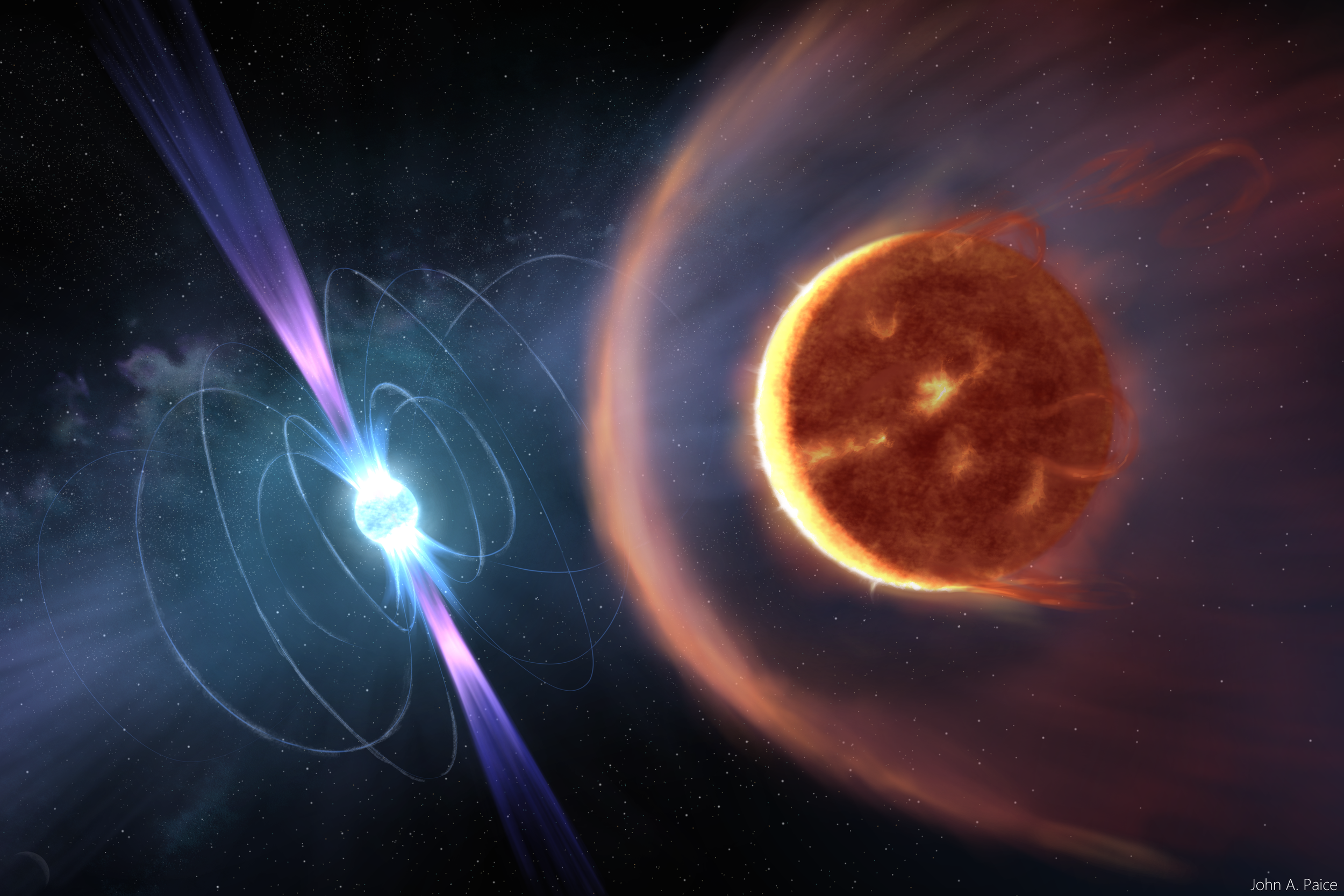
My Art in Press
Here is a catalog of all the press releases I have been a part of - including first author, co-author, or just artist.
Do you want to enhance your press release with artwork of your source? Contact me for more information!
-

NASA’s IXPE Reveals Shape, Orientation of Hot Matter Around Black Hole
Cygnus X-1, discovered in 1964, was the first cosmic object ever identified as containing a black hole. Now, NASA telescopes have teamed up to reveal new details about the configuration of hot matter surrounding this famous black hole.
In a new study published in the journal Science, astronomers using NASA’s Imaging X-Ray Polarimetry Explorer (IXPE) mission data found that the flow of matter toward the black hole’s disk is more edge on than previously thought, meaning the edge of the disk would be pointed more toward Earth than expected…
-

Violent flaring revealed at the heart of a black hole system
An international team of astronomers, led by the University of Southampton, have used state-of-the-art cameras to create a high frame-rate movie of a growing black hole system at a level of detail never seen before. In the process they uncovered new clues to understanding the immediate surroundings of these enigmatic objects. The scientists publish their work in a new paper in Monthly Notices of the Royal Astronomical Society…
-

Repeating outflows of hot wind found close to black hole
An international team of astrophysicists from Southampton, Oxford and South Africa have detected a very hot, dense outflowing wind close to a black hole at least 25,000 light-years from Earth.
Lead researcher Professor Phil Charles from the University of Southampton explained that the gas (ionised helium and hydrogen) was emitted in bursts which repeated every eight minutes, the first time this behaviour has been seen around a black hole…
-

Warped Accretion Disk Spotted around Stellar-Mass Black Hole
Variations in the brightness of light seen from around a stellar-mass black hole in the binary system MAXI J1820+070 were caused by a huge warp in its accretion disk, according to a paper to be published in the Monthly Notices of the Royal Astronomical Society. The discovery was made from an extensive and detailed light-curve obtained over almost a year by amateur astronomers who are part of the AAVSO (American Association of Variable Star Observers)…